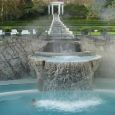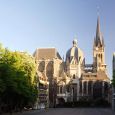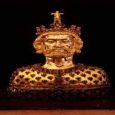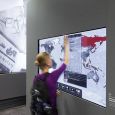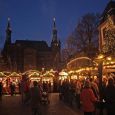Aachen
Advertisement
By Air
The nearest airports are Dusseldorf International Airport (80 km), Cologne Bonn Airport (90 km) and Maastricht Aachen Airport (40 km).
By Train
Aachen's railway station, the Hauptbahnhof, was constructed in 1841 at the Cologne-Aachen railway line and replaced in 1905, moving it significantly closer to the city centre.It serves main lines to Cologne, Monchengladbach and Liege as well as branch lines to Heerlen, Alsdorf, Stolberg and Eschweiler.ICE high speed trains from Brussels via Cologne to Frankfurt am Main and Thalys trains from Paris to Cologne also stop at Aachen Hauptbahnhof. Four RE lines and one RB line connect Aachen with the Ruhrgebiet, Mönchengladbach, Liege, Düsseldorf and the Siegerland.The euregiobahn, a regional railway system, reaches several minor cities in the Aachen region.There are four smaller stations in Aachen: Aachen West, Aachen-Schanz, Aachen-Rothe Erde and Eilendorf. Only slower trains stop at these, but Aachen-West has developed enormous importance due to the expanding RWTH Aachen university.
By Road
Aachen is connected to the Autobahn A4 (West-East), A44 (North-South) and A544 (a smaller motorway from the A4 to the Europaplatz near the city centre). Due to the enormous amount of traffic at the Aachen road interchange, there is often serious traffic accumulation, which is why there are plans to expand the interchange in the coming years.
Aachen Cathedral
is a Roman Catholic church in Aachen, Germany. The church is the oldest cathedral in northern Europe and was known as the "Royal Church of St. Mary at Aachen" during the Middle Ages. For 600 years, from 936 to 1531, the Aachen chapel was the church of coronation for 30 German kings and 12 queens. The church is the episcopal seat of the Diocese of Aachen.The Aachen cathedral treasury displays sacral masterpieces of the late Classical, Carolingian, Ottonian and Staufian period - among them there are some unique exhibits like the Cross of Lothair the Bust of Charlemagne and the Persephone sarcophagus. The Cathedral Treasury in Aachen is regarded as one of the most important ecclesiastical treasuries in northern Europe.
Elisenbrunnen
is a neoclassical building of the architect Johann Peter Cremer and Karl Friedrich Schinkel.The construction work was up to the private builder Aachen Andreas Hansen.The building was named after Princess Elisabeth Ludovica of Bavaria (Elise), daughter of the Bavarian King Maximilian I.Because of its numerous hot springs since time immemorial, Aachen was a spa and health resort.Even the Romans used the hot springs for the operation of spas.End of the 17th Century Aachen "Modebad" which from royalty and other celebrities has been investigated.The Elisenbrunnen consists of an open foyer with columned porch and each with a pavilion on the left and right with several premises. From two drinking fountains flowing warm water of the imperial source (52 ° C), which is led via a line from Büchel to the well. The water is very sulfurous , so that the Elisenbrunnen always a characteristic smell of rotten eggs ( hydrogen sulfide emanating).At the celebrities, the spa guests as the water source, the Emperor drank, stone tablets recall in the hall, which were installed during the first major reconstruction 1883rd Among them are Peter the Great , Frederick the Great , Giacomo Casanova , and George Frideric Handel.
International Press Museum
The International Press Museum of Aachen, founded in 1886, is known as the "registry office" of the world press - a world-renown museum for newspapers and press history. Located there are more than 170,000 issues, mainly first editions, jubilee editions and final editions of the international press. Besides the permanent exhibition (the history of press until today), the museum offers continuously changing exhibitions and current newspapers including some international ones.The name “Grobes Haus von Aachen” (“Great House of Aachen”) shows how impressive the building must have been all those centuries ago.And in fact, due to its size and its stone construction, the building is indeed untypical for medieval standards.The house has been modified and refurbished several times over the centuries.The number and arrangement of the windows has changed, as has the layout of the rooms inside the building.With its international focus, the museum is one of a kind. Today, it boasts the world’s largest collection of newspapers, with well over 200,000 specimens, including such rarities as first editions, special editions and final editions of German and international press from all five continents.
Cathedral Treasury
The Cathedral Treasury in Aachen is regarded as the most important ecclesiastical treasury north of the Alps. It houses sacral art treasures from the late Antique, Carolingian, Ottonian and Staufian epoch, including such unique relics as the "Cross of Lothair", the "Bust of Charlemagne" and the "Persephone sarcophagus".These and other relics document the importance of the Cathedral of Aachen as a site of the medieval treasury. Visitors are invited to explore the treasury on their own with a guide booklet available at the cashier.
Ludwig Forum for International Art
is a museum.It provides above all a setting in which different forms of contemporary art are presented.These forms of art also interact. Changing presentations from the collection and exhibitions include both famous and lesser-known works of art from all over the world.The spectrum of visual arts is complemented by demonstrations of performing arts, including music, theatre, dance, poetry and film, enabling the visitor to experience the interplay of different kinds of contemporary art.
Suermondt-Ludwig-Museum
The museum exhibits works of art from the modern age to the classical period.A tour of the museum may start with the modern times and it finally leads to the Middle Ages.The main emphasis is put on the excellent collection of portraits and sculptures from the late Middle Ages and the paintings of the 17th century.Special collections present themselves as "museum within the museum": the gallery of copperplate engravings, stained-glass exhibits, craft objects and works of ancient Greek art. Four exhibitions can be organized at the same time.
Couven Museum
offers its visitors an insight into the syle of living of the 18th and 19th century.A fascinating variety of high-quality furniture is on display as well as fine chimney pieces and Italian stucco work. Rococo and Aachen-Liege baroque create a harmonious ensemble.The Couven Museum also houses the Adler-Apotheke (pharmacy) where chocolate has been produced in in 1857 for the first time.Business hours: Tue - Sun 10.00 - 18.00 h & Mon closed, Last admission 1/2 h before closing.
Information not available


